Lab protocol and materials list
advertisement
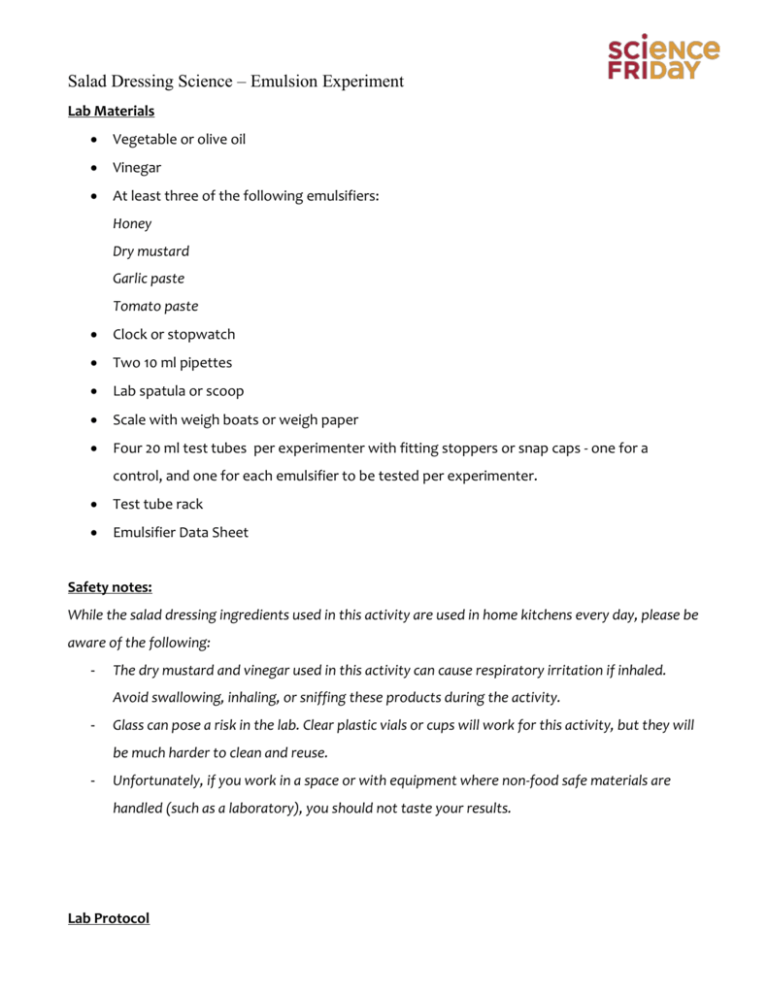
Salad Dressing Science – Emulsion Experiment Lab Materials Vegetable or olive oil Vinegar At least three of the following emulsifiers: Honey Dry mustard Garlic paste Tomato paste Clock or stopwatch Two 10 ml pipettes Lab spatula or scoop Scale with weigh boats or weigh paper Four 20 ml test tubes per experimenter with fitting stoppers or snap caps - one for a control, and one for each emulsifier to be tested per experimenter. Test tube rack Emulsifier Data Sheet Safety notes: While the salad dressing ingredients used in this activity are used in home kitchens every day, please be aware of the following: - The dry mustard and vinegar used in this activity can cause respiratory irritation if inhaled. Avoid swallowing, inhaling, or sniffing these products during the activity. - Glass can pose a risk in the lab. Clear plastic vials or cups will work for this activity, but they will be much harder to clean and reuse. - Unfortunately, if you work in a space or with equipment where non-food safe materials are handled (such as a laboratory), you should not taste your results. Lab Protocol 1. Set out four clean 20 ml test tubes in a test tube rack. 2. Use a scale to measure 2 grams of each of the emulsifiers you are going to test in this experiment. 3. To each of three test tubes, add 2 g of an emulsifier to be tested, putting a different emulsifier in each test tube. Label each test tube with the emulsifier that was added, and label the empty one “control.” Label the data sheet with the emulsifiers you will be testing. 4. Using a pipette, add 8 ml of vinegar to each test tube, and swirl to fully mix in the emulsifier. 5. Using a clean pipette, add 8 ml of oil to each test tube. Take a moment to observe the two layers of oil and vinegar as they avoid mixing with one another. This is what separation looks like, a process you’ll need to be familiar with in order to collect data in the next step. 6. Using your thumb or a stopper, cover the opening to the “control” test tube, and shake it up and down for 30 seconds (time it with a clock). At the end of 30 seconds, place it back in the test tube rack and start the stopwatch, watching the sides of the glass for 1-5 minutes for signs of separation. When you see that most of the oil has separated from the vinegar, stop the stopwatch and record how long the process took on your data sheet in the column marked “separation time.” 7. Repeat step 6 for each of the test tubes containing an emulsifier, making sure not to contaminate one test tube with the emulsifier from another. If an emulsion has not separated after 5 minutes, write “over five minutes” and the time of day on your data sheet. 8. After you have mixed and observed all of the emulsifier combinations, go back and check to see if any of the emulsions that didn’t separate earlier have now separated. Record your observations on your data sheet. You can repeat steps 1-8 to try out other herbs or spices, such as salt and pepper, to see how they effect the separation time of your dressings. You can also experiment with other vinegars or oils to see how their separation times differ, or investigate the effect of temperature on separation time.
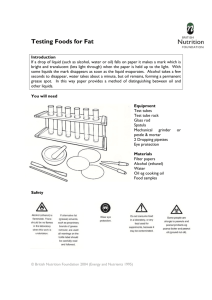
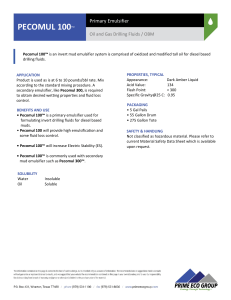
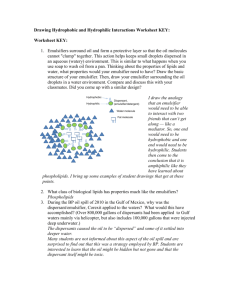
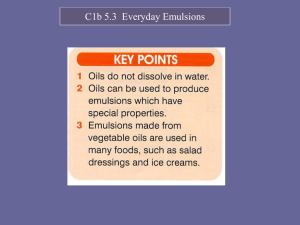

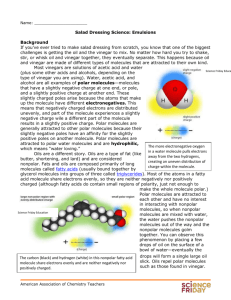





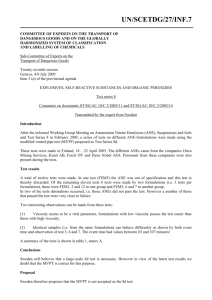
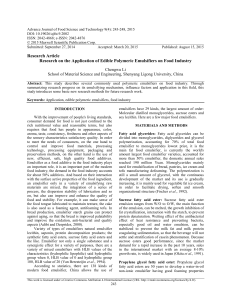
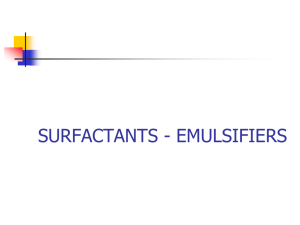
![E100 Curcumin, turmeric [Colouring]](http://s3.studylib.net/store/data/007890633_2-c145261f33acc2b4f34ba63f44fe8300-300x300.png)